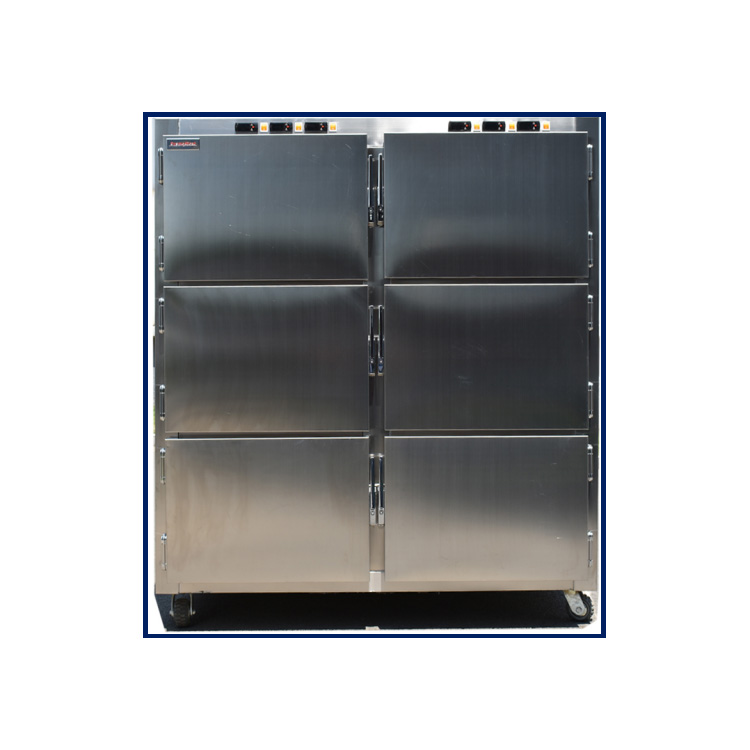 English
English Español
Español  Português
Português  русский
русский  Français
Français  日本語
日本語  Deutsch
Deutsch  tiếng Việt
tiếng Việt  Italiano
Italiano  Nederlands
Nederlands  ภาษาไทย
ภาษาไทย  Polski
Polski  한국어
한국어  Svenska
Svenska  magyar
magyar  Malay
Malay  বাংলা ভাষার
বাংলা ভাষার  Dansk
Dansk  Suomi
Suomi  हिन्दी
हिन्दी  Pilipino
Pilipino  Türkçe
Türkçe  Gaeilge
Gaeilge  العربية
العربية  Indonesia
Indonesia  Norsk
Norsk  تمل
تمل  český
český  ελληνικά
ελληνικά  український
український  Javanese
Javanese  فارسی
فارسی  தமிழ்
தமிழ்  తెలుగు
తెలుగు  नेपाली
नेपाली  Burmese
Burmese  български
български  ລາວ
ລາວ  Latine
Latine  Қазақша
Қазақша  Euskal
Euskal  Azərbaycan
Azərbaycan  Slovenský jazyk
Slovenský jazyk  Македонски
Македонски  Lietuvos
Lietuvos  Eesti Keel
Eesti Keel  Română
Română  Slovenski
Slovenski  मराठी
मराठी  Srpski језик
Srpski језик
When storing bodies in hospital mortuaries, what temperature should the refrigeration system maintain to ensure both preservation and energy efficiency?
2025-10-17
Hospital mortuaries are primarily used to store bodies. The core requirement is to keep the bodies as intact as possible during storage, preventing them from decaying or deteriorating. Energy consumption must also be considered. Setting the temperature too low can lead to high electricity bills. Therefore, setting the refrigeration temperature is crucial. Finding a balance between maintaining the body's preservation and controlling energy consumption is crucial; simply adjusting the temperature isn't enough.
Body Preservation Conditions
To determine the right temperature, you must first understand the ideal temperature at which a body can be stored in a hospital mortuary without spoiling. As we all know, higher temperatures increase bacterial growth and accelerate decay; lower temperatures weaken bacterial activity, allowing the body to be preserved longer. However, lower temperatures aren't always better. Excessively low temperatures not only waste electricity but can also cause frostbite and other problems, complicating subsequent handling. Generally speaking, bacterial growth is significantly inhibited below 0°C, making it difficult for them to reproduce in large numbers, effectively slowing the decay process. If the temperature rises above 0°C, such as to 2°C or 3°C, the body can still be preserved for a period of time, but the shelf life is shortened and there is concern about localized deterioration. Higher temperatures can easily lead to odor and deterioration, effectively failing to meet preservation requirements.
Common Industry Standards
Currently, hospital mortuary refrigeration temperatures are generally based on common industry standards, generally set between -4°C and 0°C. This temperature range effectively inhibits bacterial growth, keeping the body in good condition for the normal storage period without noticeable deterioration, discoloration, or odor.

The Problem with Lower Temperatures
Some may ask, since lower temperatures preserve freshness better, why not simply set the mortuary temperature to -10°C or even lower? This is actually unnecessary and can lead to numerous problems. First, there's energy consumption. For every 1°C drop in temperature, refrigeration equipment consumes 5% to 8% more energy. This represents a significant long-term expense, significantly increasing hospital operating costs. Secondly, there's equipment wear and tear. Maintaining excessively low temperatures for extended periods requires the refrigerator's compressor to work continuously at high intensity, making it susceptible to overheating and aging. This shortens the lifespan and increases the frequency and cost of repairs. Furthermore, prolonged exposure to excessively low temperatures can cause cells to freeze and tissues to freeze hard. Subsequent processing requires waiting for the body to thaw, which is not only troublesome but can also affect its appearance and be counterproductive.
The Problem of Too High a Temperature
Could the mortuary temperature be slightly higher, perhaps between 0°C and 2°C? While this temperature can still preserve bodies, it significantly increases the risks. Especially in the summer, when temperatures are high, occasional temperature fluctuations in the refrigerator can easily exceed 2°C. This accelerates bacterial growth, and within just one or two days, the body may develop signs of decay, such as an unpleasant odor and discoloration.



